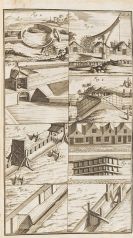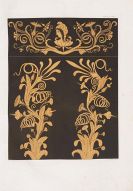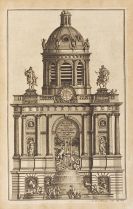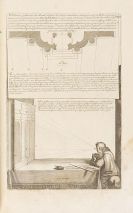
Frank Lloyd Wright
Richland Center
1867 -
Phoenix
1959
The American architect and designer Frank Lloyd Wright was born in 1867 in Richland Center, Wisconsin. From 1885 until 1887, he studied mechanical engineering at the University of Wisconsin but dropped out after only four semesters to work in the Chicago architectural practice of Joseph Lyman Silsbee. Frank Lloyd Wright soon transferred to the architectural practice of Dankmar Adler and Louis Sullivan, who were among the most renowned and progressive architects of their day. Frank Lloyd Wright was responsible for commissions for private houses until 1893, when he founded a practice of his own in Chicago.
By 1909 he had built some fifty private houses, mainly in Chicago and environs, in what was known as the "Prairie Style". The earliest of them showcased materials such as fieldstone, brick, and wood left as far as possible in their natural state so these houses fitted harmoniously into their surroundings and were also extremely comfortable, spacious and long on atmosphere. Long and low-slung, "Robie House" (1906) is regarded as the most mature example of the "Prairie House"; it is built of brick, concrete, steel, and glass. Frank Lloyd Wright also designed the interiors of his houses.
Even when designing office buildings and public buildings, Frank Lloyd Wright always strove to create as inviting an atmosphere as possible in the new interiors: "the space within that building is the reality of that building." Between 1903 and 1905, Frank Lloyd Wright designed the Larkin Building in Buffalo, with open mezzanines and a lofty interior flooded with light, an early open-plan office, as it were, in which employees worked within sight of each other. In 1904 Frank Lloyd Wright also designed a metal swivel office chair for the Larkin Building. In 1905 Frank Lloyd Wright built "Unity Temple" in Oak Park, a Chicago suburb.
From 1909 until 1911, Frank Lloyd Wright traveled through Germany, Austria, Italy, and France. During that extensive trip, Frank Lloyd Wright also consulted with the publisher Ernst Wasmuth in Berlin on a book on Wright's work. In 1911 Frank Lloyd Wright built his own house, "Taliesin", in Spring Green, Wisconsin. Between 1916 and 1922, Frank Lloyd Wright spent most of his time in Japan, where he supervised the building of the "Imperial Hotel" in Tokyo. He built "Holyhook House" in Los Angeles in 1917.
In 1922 Frank Lloyd Wright opened a practice in Los Angeles but by the late 1920s he was forced by the worldwide economic crisis to return to Spring Green. There he founded the "Taliesin Fellowship", a guild based on the aesthetics of John Ruskin. With his students, Frank Lloyd Wright worked until 1934 on a utopian housing project, "Broadacre City". Edgar J. Kaufmann was a student of Frank Lloyd Wright's, who later commissioned his teacher to build a house for him (1935), "Falling Water", at Mill Run, Pennsylvania. The low, elongated building tracts and terraces of "Falling Water" are cantilevered out over a waterfall. Frank Lloyd Wright designed the interior and had underfloor heating laid throughout.
Between 1936 and 1939 Frank Lloyd Wright designed the Johnson Wax Factory building for S.C. Johnson & Son in Racine, Wisconsin. In the 1940s Frank Lloyd Wright was commissioned by Solomon R. Guggenheim and Hilla Rebay to build the world-famous Guggenheim Museum in New York. The ingenious and spectacular spiral form of the interior provoked countless disputes with the executors of Solomon Guggenheim's estate after his death in 1949. The Guggenheim Museum was not completed until 1959, six months after Frank Lloyd Wright himself died at the age of ninety-two.
Frank Lloyd Wright bequeathed a rich legacy of over 1000 planned projects, of which more than 500 were realized. Always using cutting-edge materials and techniques, Frank Lloyd Wright wanted forms to match landscape that fitted into the whole scheme of things: "The good building makes the landscape more beautiful than it was before the building was built."
Would you like to sell a work by Frank Lloyd Wright?
Infos for seller








